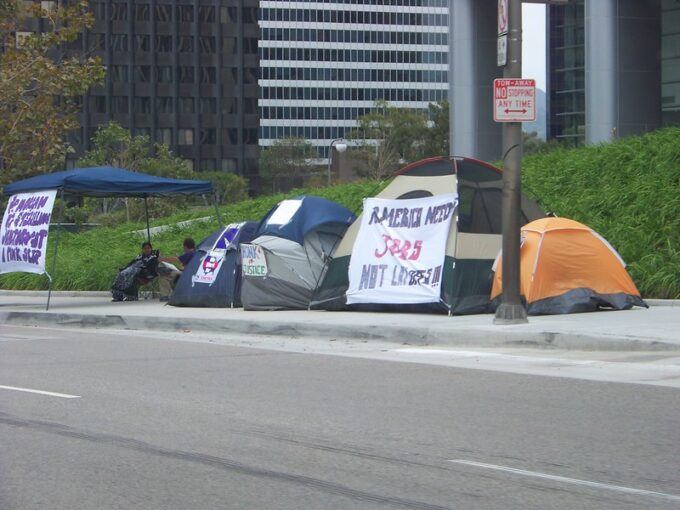
Photograph Source: haymarketrebel – CC BY 2.0
Been eating a bit too much ice cream this sweltering summer? Thinking about going on a bit of a diet? Well, imagine yourself counting calories but exempting anything with sugar from all your counting.
Would that approach help you make an appreciable dent on your excess bodily baggage? Of course not. We can’t eliminate what we ignore. And that goes for inequality as well, over 300 distinguished economists worldwide are charging in a new open letter to the United Nations and the World Bank.
Back in 2015, these eminent economists remind us, the world’s nations came together and adopted a series of “Sustainable Development Goals” — SDGs for short — designed to systematically attack both poverty and climate change. The tenth of these goals specifically aims to “reduce inequality within and among countries.”
The progress so far on this inequality SDG? Practically nonexistent. By many measures, the open-letter economists note, our “inequalities have worsened,” and that worsening really matters. Without reducing the “deep divide” that separates our global rich from the rest of us, the economists suggest, we’ll forever be going nowhere on “ending poverty and preventing climate breakdown.”
Significantly narrowing our world’s deeply unequal distribution of income and wealth will, of course, always remain a tall order, given the political power that grand fortunes create. The World Bank, unfortunately, has made that order taller.
The UN’s member nations have essentially made the bank the world’s official inequality scorekeeper. But the metrics the World Bank uses to track inequality have turned out to be “very inadequate,” charges Jayati Ghosh, a coauthor of the economists’ new open letter.
We already have, Ghosh points out, a variety of established yardsticks for measuring inequality. The Gini coefficient plots actually existing income distributions between 0 for total equality and 1 for infinite inequality. The more easily understandable Palma ratio divides the income share of a society’s top 10 percent by the income share of its bottom 40 percent.
